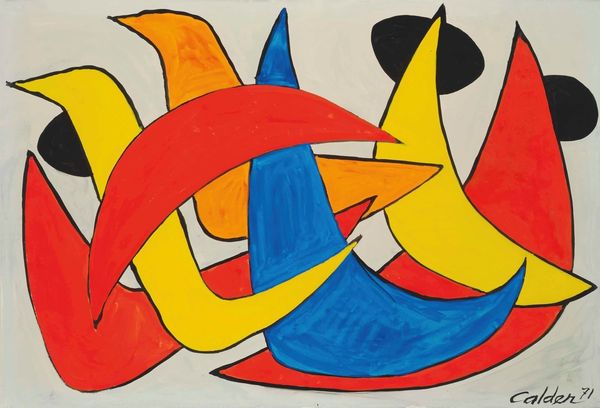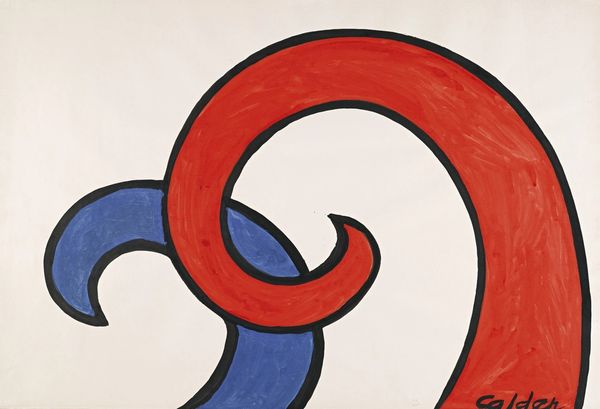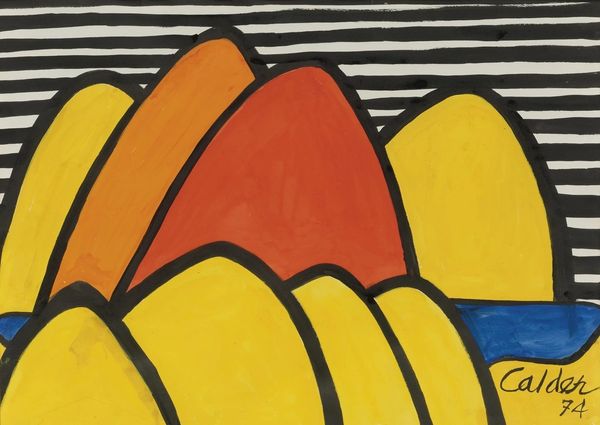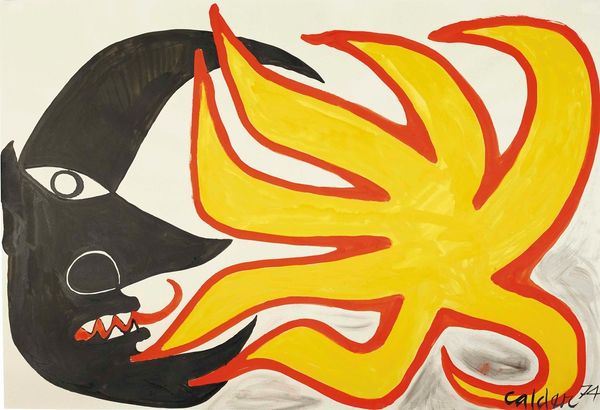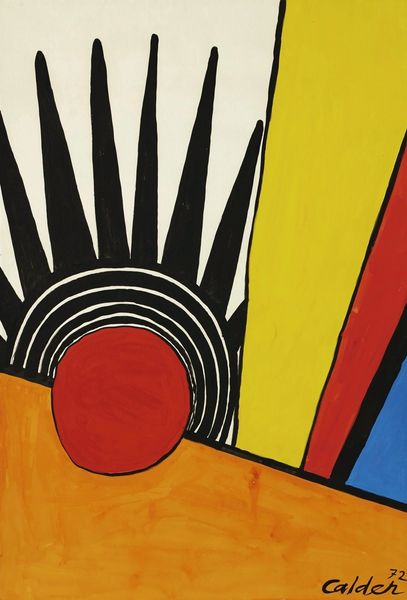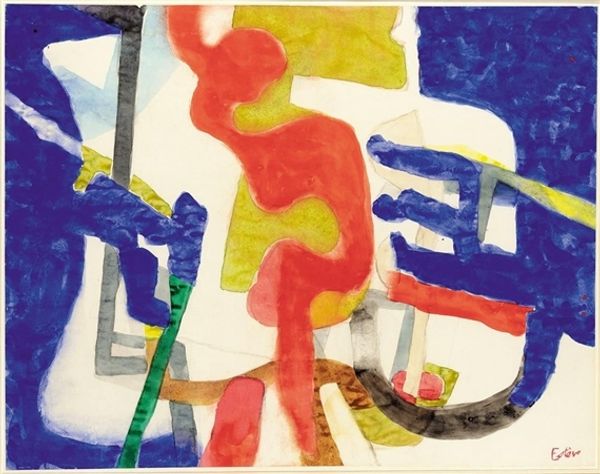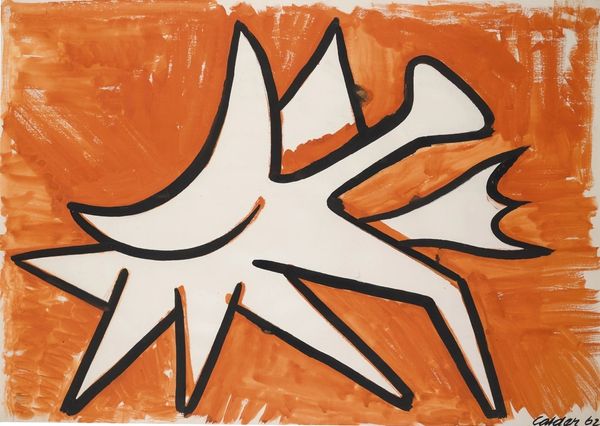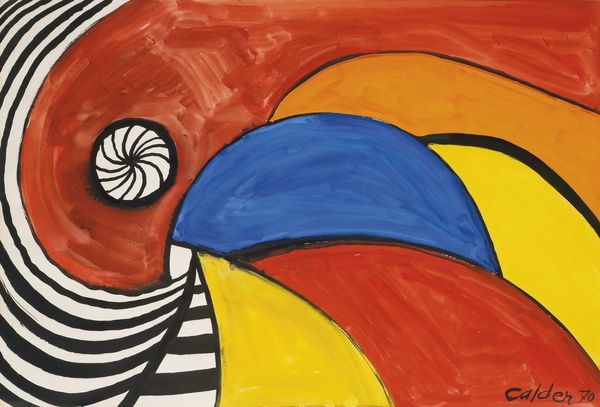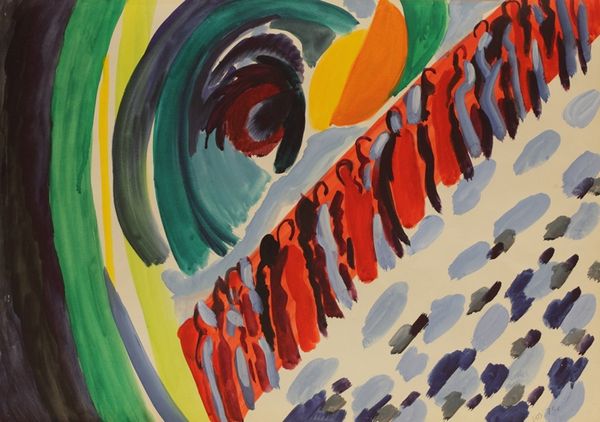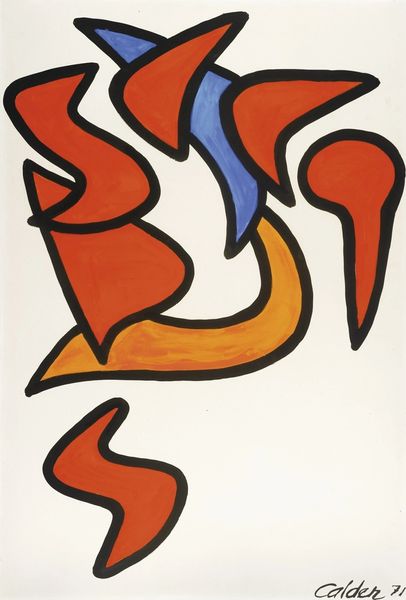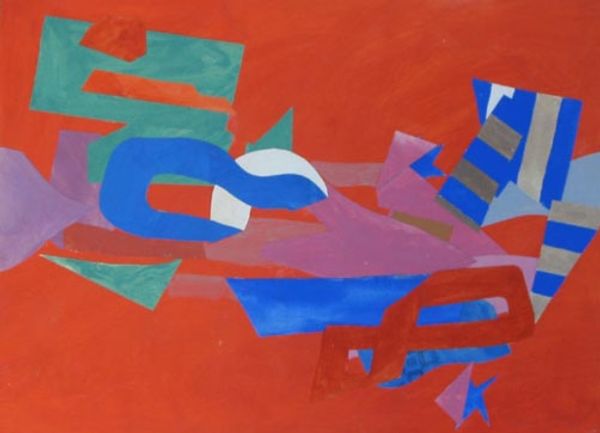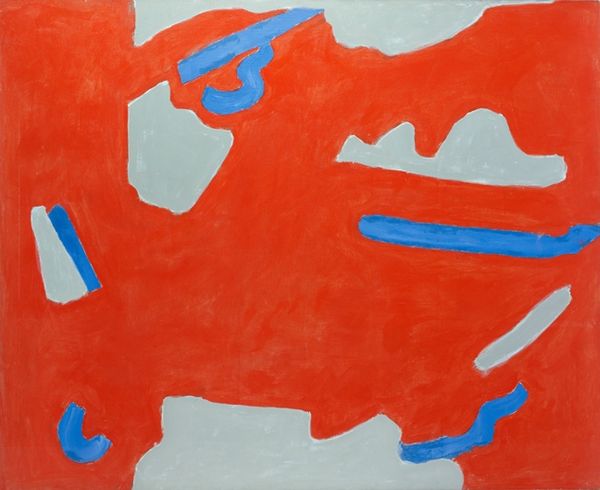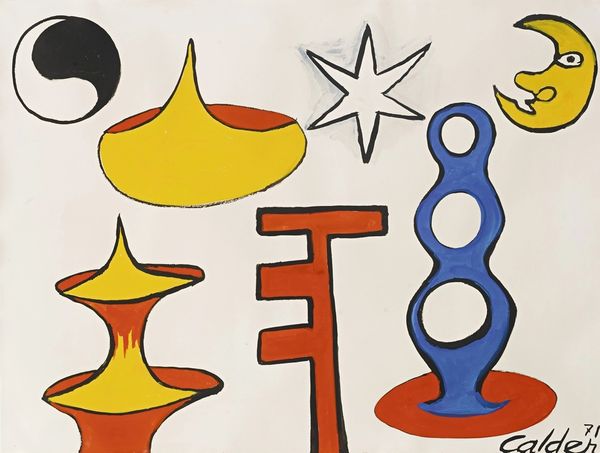
Copyright: Modern Artists: Artvee
Curator: This striking painting is Alexander Calder's "Cap d'Antibes," created in 1970 using acrylic paint. What catches your eye first? Editor: The sheer boldness of the color! The high-key yellow, that saturated blue… and then this… form—what is it? A bizarre orange anemone adrift at sea. Curator: It is undeniably vibrant. But I also read it as a visual echo of maritime culture. The bold colors and simplified forms are reminiscent of nautical flags. There is something about the composition which gives you a subliminal nautical communication, don't you think? Editor: Perhaps. But it feels more playful, more rooted in pure color-field exploration than symbolic language. I’m thinking of something between Fauvism and Pop Art, a riotous experiment with color interaction and abstracted form. Note the strong black outlines. Curator: You are right about the emphasis on color, I believe the outlines are what define the visual culture behind Pop Art. But it may still invoke that age-old connection between humans and the sea through visual metaphor. Like a surreal interpretation of sails or signal flares—a language of the water. The red could also suggest warmth. Editor: Ah, the warmth of the Mediterranean sun reflecting on those blue waters. But let's go back to its modernity for a moment. That almost aggressively flat application of color flattens any sense of depth. What depth there might be collapses under the emphatic colour choices. Curator: Interesting. For me, the lack of perspective pushes the piece towards the symbolic—a universal symbol of landscape rather than a photographic rendition of it. Its stylized nature echoes earlier conventions in folk art and graphic design. A modern seascape reinterpreted through older cultural archetypes. It feels deliberately childlike. Editor: Perhaps. What I enjoy about Calder is this refusal to sit comfortably in any category. It is what makes this painting so magnetic—the pure, unadulterated joy of seeing through colour. Curator: A refreshing take on how visual cultures inform us as an act of remembrance. That bold composition lingers, echoing forms and memories beyond this single image.
Comments
No comments
Be the first to comment and join the conversation on the ultimate creative platform.
